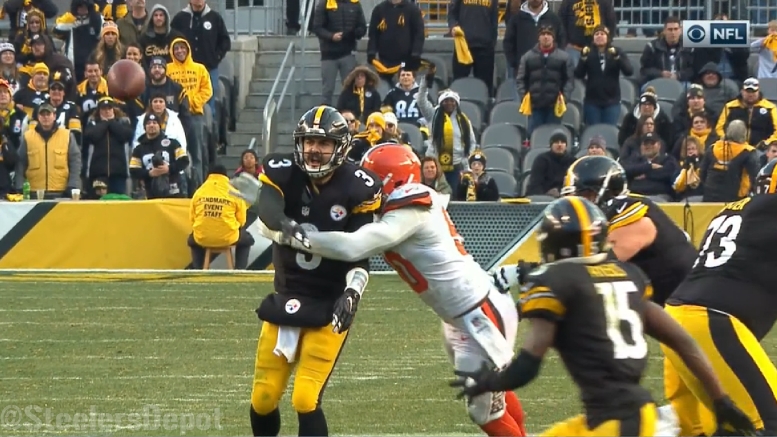For whatever reason might have served as the motivation for a certain article that was published yesterday, the Pittsburgh Steelers community spent a good deal of the past 24 hours or so discussing veteran quarterback Ben Roethlisberger from the perspective of his off-field behavior, and how he has become a divisive sports figure.
When it comes to Steeler Nation, however, the real divisive quarterback is actually his backup, Landry Jones, who, because Roethlisberger was given the regular-season finale off to rest, was given the opportunity to make his second start of the season, and in doing so secured his first true victory of his career, in coming from behind in overtime with a pair of big-time throws—albeit against the Browns.
The starting quality of backup quarterbacks is very frequently difficult to judge because they serve a position in the practice hierarchy in which they get very little opportunity to receive quality work unless they are already practicing in advance of a game for which they are in line to start.
Players who do not have the full benefits of practice, generally speaking, are not, or should not be, expected to perform to the same level of crispness and overall quality that those who consistently take starter reps and work with starting players are able to achieve.
Still, of course, a backup quarterback is expected to be able to play at a competent level and not lose a game. And Jones did essentially throw a pick-six that was only saved by an extra-effort hustle play that managed to force the returner to fumble the ball just before crossing the end zone, spilling out of the end zone for a touchback.
One thing that the fourth-year quarterback and pending free agent has to be credited for, however, was his ability in that game to capitalize against the Browns’ defense in the red zone. They didn’t get many opportunities, but under Jones’ watch, the offense came away with three touchdowns in their three ventures inside the Browns’ 20-yard line. The final, game-winning touchdown was launched with the line of scrimmage at the 26-yard line.
The initial spark was provided by a bad snap from a backup-to-a-backup undrafted rookie center, which allowed the Steelers to start their drive from the Browns’ 37-yard line, but Jones completed a fourth-down pass for a first down on that drive, and then his tight end for 11, before finding his running back for an 11-yard score just before halftime.
Late in the third quarter and into the fourth, Jones led the Steelers on an 80-yard scoring drive, on which he admittedly relied heavily on his running backs, both on the ground and in the air, though he did complete a pair of 15-yard passes, and the drive ended on a one-yard rushing score.
On the Steelers’ next possession, which started from their own 39, Jones hit on a deep pass for 46 yards that put the ball on the 11. Two plays later, he found one of his receivers on a crossing route for the 11-yard score. Efficiency in the red zone: it’s a good thing.







